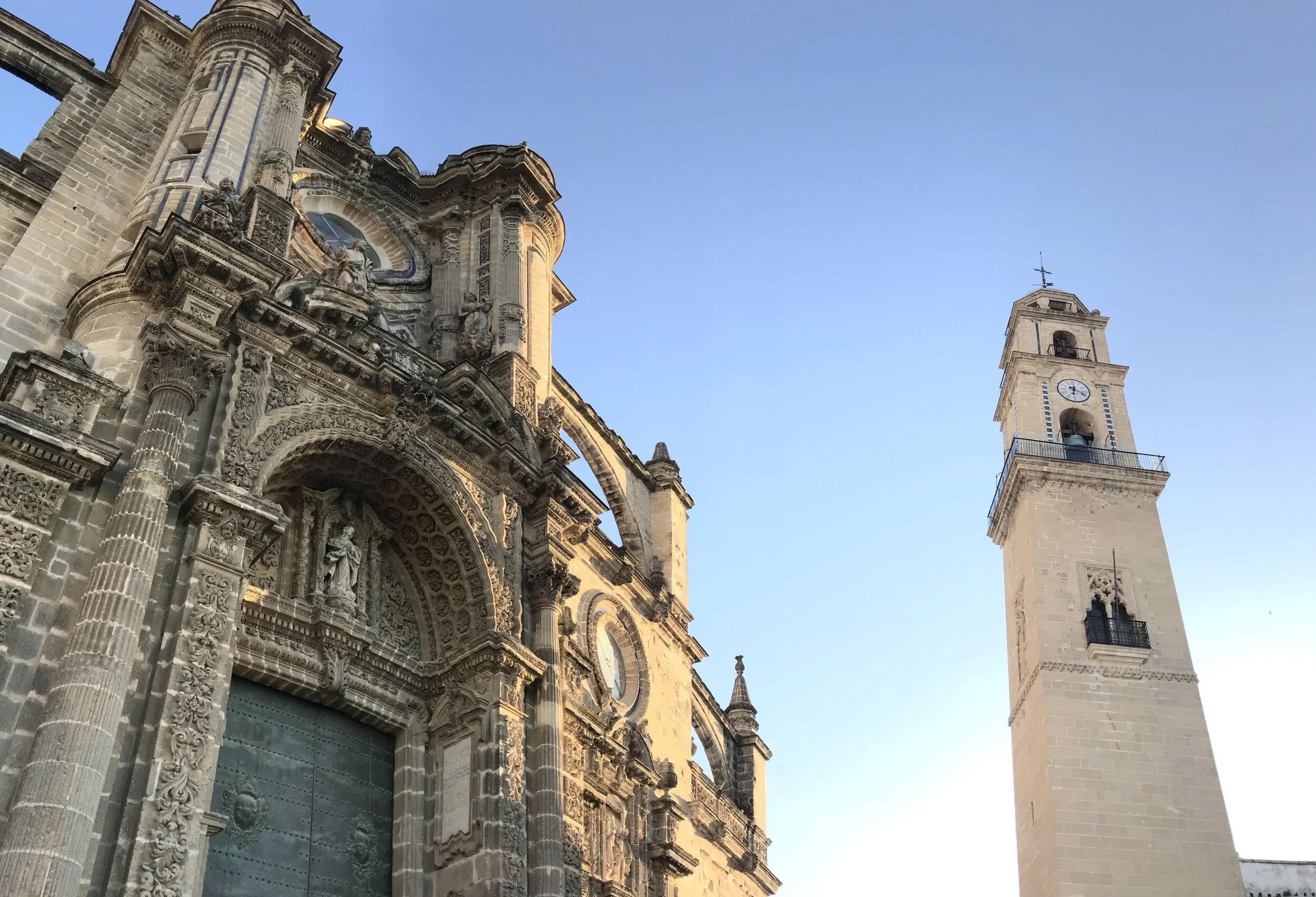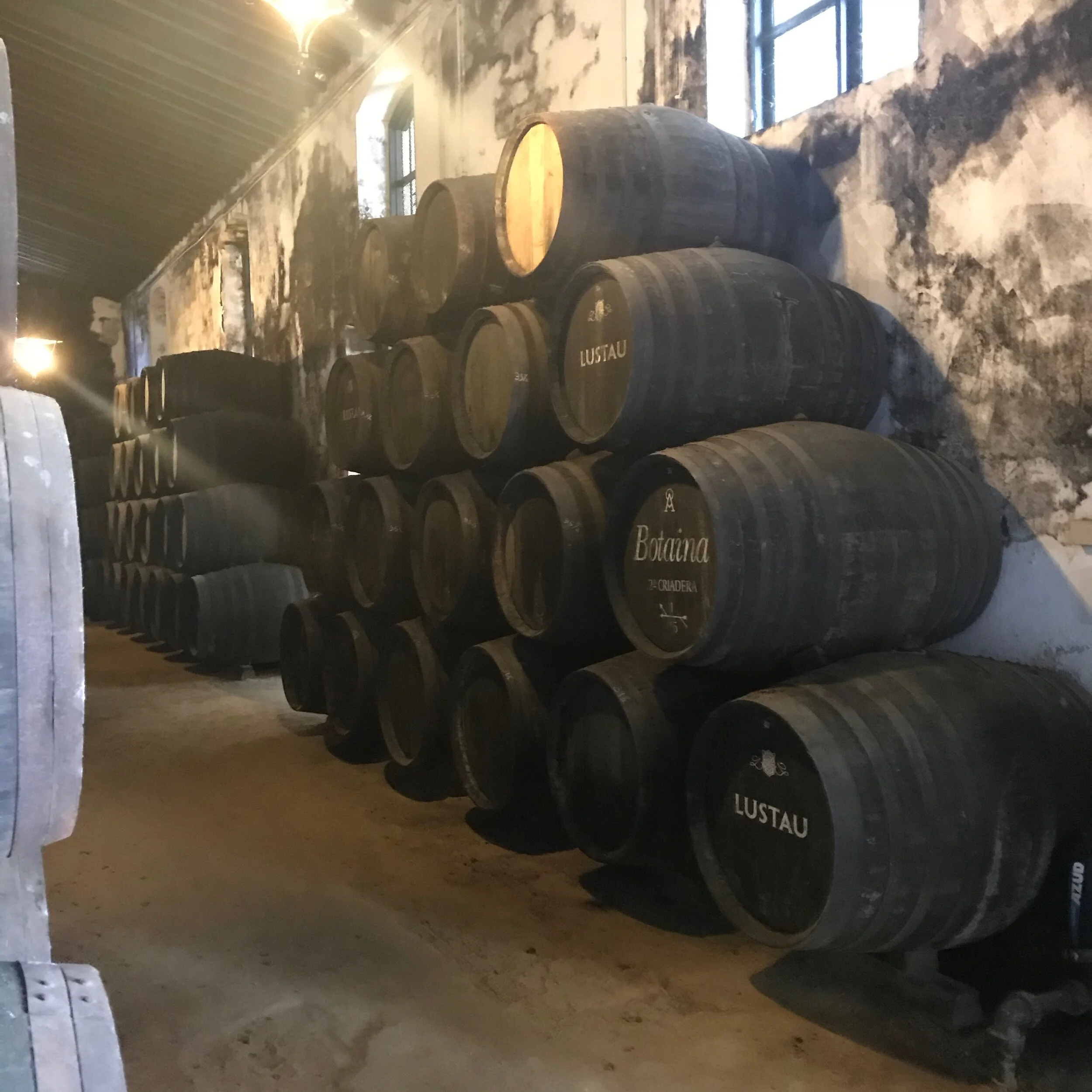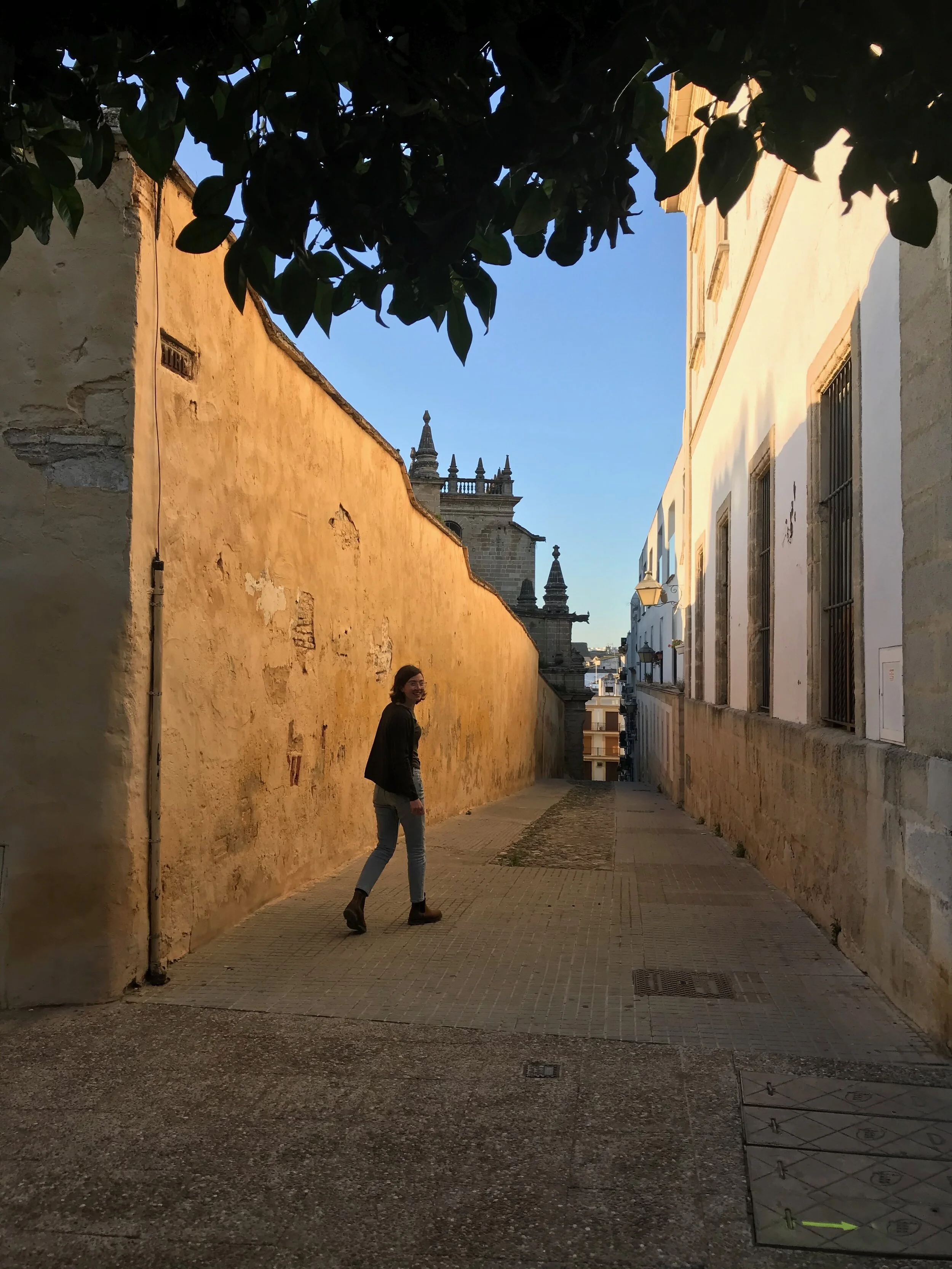A Tour of Tapas: Jerez Part I, A Bull's Tail Tale
For a few posts now I’ve written about tapas in Spain. About how they uniquely reflect not only Spanish food but Spanish culture more broadly. Tapas aren’t, as we’ve come to understand them in the US, about going out for a meal comprised of small plates. Rather, they’re about going out to catch up with family and friends, and finding yourself accidentally full after a few hours of lively conversation, drinks, and one toothpick after the other of irresistible bites.
And we’ve certainly had our fill. Here’s another of our favorite tapas experiences from around the country. ¡Buen provecho!
This is Part I, For Part II Click HERE
We were lugging our bags from the train station up the hill towards the center of town. It was just after noon in Jerez, prime tapas time, yet most cafeterías and taverns were closing, folding up sandwich-board signage and drawing their shutters. Worse yet, it seemed some hadn’t opened at all. This was concerning.
It was February. Smack-dab in the middle of Spanish winter (the temperature a chilly 67º) and decidedly off-peak time, especially in a tourist town like Jerez. The train schedule was relaxed, only two or three arrivals per day, and boutique owners were opening their mountain cabins rather than their shops. Even the dressage team, a very far second to Sherry as Jerez’s most famous export, would’t begin exhibitions for another two months.
I checked my phone, anxious to make the bodega tour we’d arranged for that afternoon. This too had been tricky, but we’d managed to get a spot on Lustau’s second (and final) English speaking tour of the day at 4 o’clock; perfectly timed to check into the apartment and grab a quick bite beforehand. We’d had only a light breakfast before catching our train in Seville earlier that morning and aimed to avoid stumbling through wine-cellars on an empty stomach.
By now, we’d found our place and were enjoying the view from our balcony, lush with all manner of citrus and succulents in terracotta pots. We were at the crest of a hill in the center of town and the city’s red roofs and white plaster spread out from us in waves, interrupted only occasionally by the imposing stone and angular steeples of ancient cathedrals. It was about 1:40. I was logged onto the wifi looking for a good [read: any open] restaurant near the bodega where we could get lunch. I checked my email confirmation from Bodega Lustau for the address: Información Visitantes Lustau: Buenos días, nos complacerá atenderles hoy a las 14.00 horas en inglés. Estamos a C/Arcos, 53. Un cordial saludo.
14:00 hours. 2 o’clock. Shit! Foiled again by my inability to do simple arithmetic. We only had about 10 minutes. We ran.
It was just a few minutes after two when we arrived at Bodega Lustau. Though we’d been moving a lot those first few weeks we’d been eating more, and this short run saw us panting and quite sweaty. Hands on our knees, we apologized between breaths to our Spanish guide and the only other couple on our tour, a Dutch architect and his wife who looked on bemused (we’re still not sure whether at our lateness or at learning that Americans can, in fact, run (if only short-distances and if only for alcohol)).
The local woman leading our tour now began, guiding us into the dark and cool bodega. As we entered, she proudly announced in her sing-song-y English that because we were so few, she’d be doing double pours of each of the wines. She smiled widely at us. Our empty stomachs turned.
…
One hour and eight very generous pours of sherry later, we emerged from the mustiness of the bodegas squinting into the Andalusían sun. We were now very drunk, quite famished (while generous with their pours the bodega had been more withholding of the bar nuts), and wandering an off-season tourist town whose restaurants we didn’t expect to open for another 3 hours, if at all. In short, we were desperate.
We looked down the dusty side-street where the tour had spit us out. Finding no signs of life in either direction, we chose one at random and began to walk. The first three restaurants we passed were closed tight, metal shutters drawn and locked over both windows and doors. Not that we could get to them anyway; the outdoor seating was stacked, chained, and padlocked across their facades, a Cruzcampo branded barricade to emphasize how absolutely cerrado they all were.
Even though it was technically winter, the sinking Mediterranean sun mixed with our rising BACs were making things increasingly urgent. It began to feel as if we were wandering the desert in search of some oasis. Then, catty-corner from where we were standing, a bit of movement. A narrow door, disguised within a mural painted on the side of the building, had swung open revealing a restaurant within. Or so we hoped. Praying that this wasn’t a mirage we crossed the street.
We squeezed into the slat-like half door and found ourselves in a nearly empty bar, it’s dark wood and too few windows lending a slightly gothic vibe. A man in a suit was sat at one end drinking a sherry while two very old men sat at the other quietly smoking. They paid us no mind as we walked in, all fully absorbed in the violent nature documentary mutely playing on the tv in the corner. The Flamenco emanating from the kitchen radio provided a fitting soundtrack to the Safari’s predator-prey dance playing out before us. The two old men mirrored the drama playing out on screen, pulling meat from the bone of some saucy braised thing which, if not pretty, looked like exactly what we needed. Though how exactly they all had gotten served was unclear, as no one was at the bar or in the kitchen, which we could see through a small window in the back wall.
Just as we were about to leave, one of the old pair stood, used the bar rag to wipe the sauce caught in his mustache, and handed us some menus. He leaned against the back counter, hands tucked behind him against the rail, and looked on expectantly. Over his shoulder hung a photograph. In it, a much younger version of this man, same mustache and same vest, stood in this exact place, as if he’d been waiting to take our order for the past 40 years. In the photograph next to him, another man, wine reddening his cheeks, draped an arm over his shoulder. I looked from the doppelgänger in the photograph back to the man presently standing in front of me. Unable really to parse through the Spanish menu and desperate for anything I pointed to where he had been sitting, “Eso por favor, el carne.”
His companion now stubbed out his cigarette, gingerly rose from his seat, and shuffled back into the kitchen. Here he quickly got to work, warming a cazuela (Spanish earthenware) over a flame and scooping into it a generous hunk of meat glistening with sauce. While the braise warmed he sliced some bread and put it in a basket along with a bag of tiny breadsticks. He passed both the cazuela and the bread through the window, and in his reddened face I saw the second man in the photograph, a head shorter and now bald, but definitely the same. His partner grabbed the dish from the pass and handed it to us: El rabo de toro. Oxtail (in Spain, fittingly called “Bull’s Tail”), braised in wine.
The tail practically fell from the bone with the gentle force of the plate hitting the bar top. Ravenous, we immediately dug in, each grabbing a bit and popping it into our mouth. Gelatinous and giving the meat melted immediately, becoming indiscernible from the sweet sherry sauce which made the whole finger-licking experience feel excessively indulgent. Very quickly, we were left with a pile of bones cleaned of all meat and even their chewy, sticky cartilage. It didn’t matter that the bread was a bit stale, I’d coat anything in that sauce and its sheen, and the little that was left was soon sopped up.
After the first we ordered a second which disappeared as fast. By now, the oxtail and bread doing their work on our empty stomachs, we were feeling relatively recovered from our bodega ordeal and ordered some cañas to accompany a third. Finally, sated and able to walk a straight line (if we’d had any interest in walking), we pushed out our stools, bid farewell to the two owners, and immediately went home to nap.



